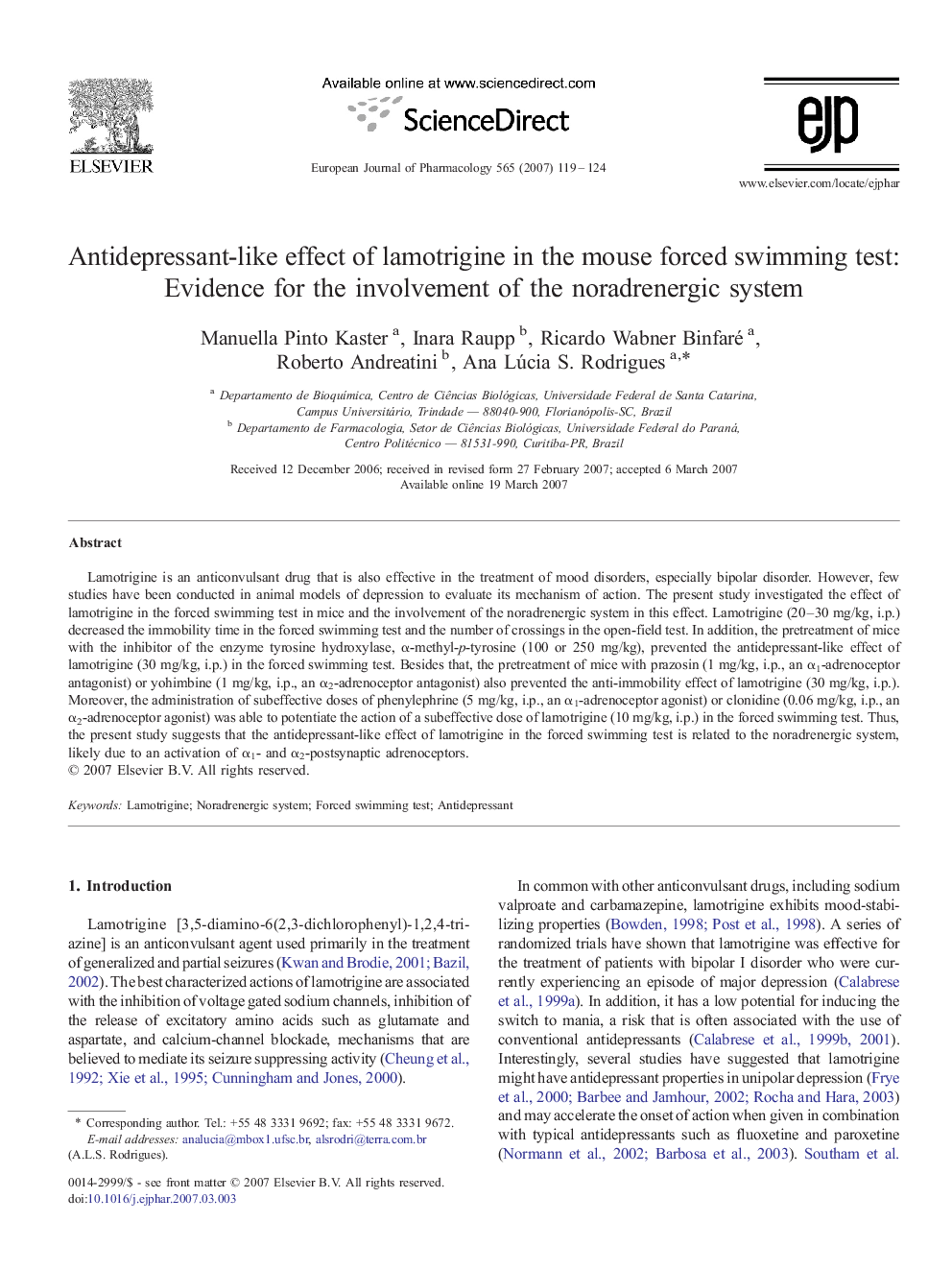| Article ID | Journal | Published Year | Pages | File Type |
|---|---|---|---|---|
| 2536191 | European Journal of Pharmacology | 2007 | 6 Pages |
Lamotrigine is an anticonvulsant drug that is also effective in the treatment of mood disorders, especially bipolar disorder. However, few studies have been conducted in animal models of depression to evaluate its mechanism of action. The present study investigated the effect of lamotrigine in the forced swimming test in mice and the involvement of the noradrenergic system in this effect. Lamotrigine (20–30 mg/kg, i.p.) decreased the immobility time in the forced swimming test and the number of crossings in the open-field test. In addition, the pretreatment of mice with the inhibitor of the enzyme tyrosine hydroxylase, α-methyl-p-tyrosine (100 or 250 mg/kg), prevented the antidepressant-like effect of lamotrigine (30 mg/kg, i.p.) in the forced swimming test. Besides that, the pretreatment of mice with prazosin (1 mg/kg, i.p., an α1-adrenoceptor antagonist) or yohimbine (1 mg/kg, i.p., an α2-adrenoceptor antagonist) also prevented the anti-immobility effect of lamotrigine (30 mg/kg, i.p.). Moreover, the administration of subeffective doses of phenylephrine (5 mg/kg, i.p., an α1-adrenoceptor agonist) or clonidine (0.06 mg/kg, i.p., an α2-adrenoceptor agonist) was able to potentiate the action of a subeffective dose of lamotrigine (10 mg/kg, i.p.) in the forced swimming test. Thus, the present study suggests that the antidepressant-like effect of lamotrigine in the forced swimming test is related to the noradrenergic system, likely due to an activation of α1- and α2-postsynaptic adrenoceptors.
